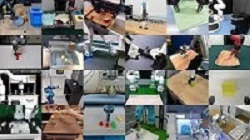A team of researchers from the Translational Pediatrics working group at the Department of Pediatrics and Adolescent Medicine at Uniklinikum Erlangen, led by Emmanuel Nedoschill, Ferdinand Knieling, and Adrian Regensburger, have developed an innovative method to monitor the progression of SMA using short laser pulses that generate sound waves. Their findings were published in the journal Med.
Spinal Muscular Atrophy (SMA) is a debilitating condition caused by the degeneration of nerves responsible for signaling muscles. This genetic disorder results in muscle wasting and has been a significant challenge in the medical community due to limited treatment options. However, recent advancements in genetic treatments have brought new hope to patients and their families.
This method, called optoacoustic imaging (OAI), is similar to ultrasound scans but uses near-infrared light instead of sound waves. The procedure is non-invasive and does not require children to swallow contrast agents or undergo surgery. This not only makes it easier for medical teams but also reduces stress for the children and their families during hospital stays.
SMA affects various categories of patients, ranging from those who can still walk to those who can only sit, and the most severe cases, known as non-sitters, who cannot even sit unassisted. The disease can lead to fatal consequences if it affects muscles responsible for swallowing or breathing.
Although genetic treatments have shown significant improvements, monitoring the progression of SMA remains a challenge. Traditional methods involve strenuous movement tests that can last for several days and may not be entirely objective due to variations in children’s effort and mood. OAI, on the other hand, can provide more accurate and objective information on muscle health.
The OAI procedure uses short laser pulses to heat the affected tissue, which then emits sound waves. These sound waves can reveal important information about the various structures within the patient’s body. For instance, muscle tissue contains hemoglobin, which is responsible for transporting oxygen to the body and removing carbon dioxide. The more active the muscle cells are, the more oxygen they require, and the more hemoglobin can be detected.
By analyzing the hemoglobin spectrum, researchers can determine the muscle mass and its activity level. If muscles are wasting away and being replaced by connective tissue, the three-dimensional images generated by OAI can document the progression of the disease and help monitor the effectiveness of treatments.
In conclusion, the OAI method developed by the researchers at Uniklinikum Erlangen has the potential to revolutionize the monitoring of SMA patients, providing more accurate and objective information on muscle health and disease progression. This breakthrough could significantly improve the quality of care for SMA patients and bring us one step closer to finding a cure for this debilitating condition.
*Note:
1. Source: Coherent Market Insights, Public sources, Desk research
2. We have leveraged AI tools to mine information and compile it




